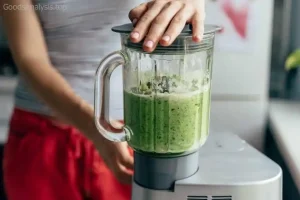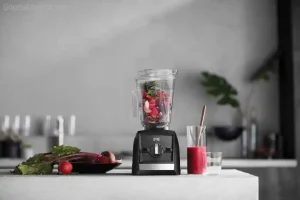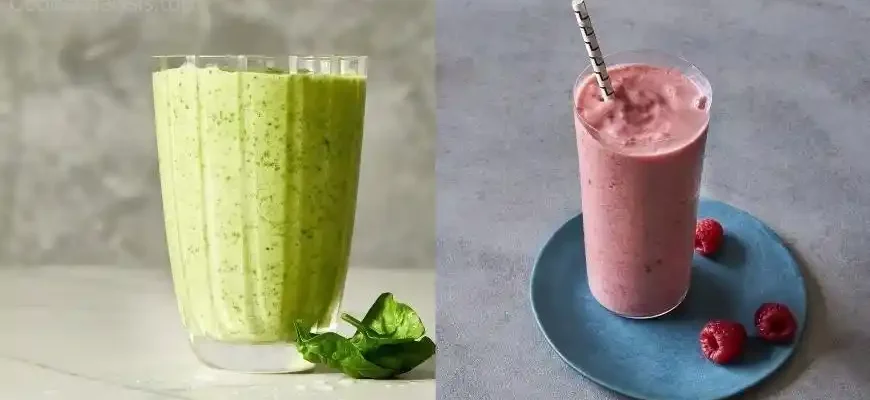Making a smoothie without a blender might sound like a challenge—after all, a blender is practically the cornerstone of a good smoothie, right? But the truth is, it’s entirely possible, and sometimes it can even be more satisfying to do it the old-fashioned way. You’ll need a bit of patience, some elbow grease, and a few simple tools. So, whether you’re without a blender by choice, necessity, or simply due to a broken appliance, let’s dive into how to make a smoothie without one. We’ll cover everything from the basic techniques to some helpful tricks and tips to ensure you get that perfectly blended, refreshing smoothie experience.
Why Make a Smoothie Without a Blender?
Before we get into the how-to, let’s quickly explore why you’d want to make a smoothie without a blender in the first place. The obvious reason is that you might not have one on hand—perhaps you’re traveling, camping, or your trusty blender has finally given up the ghost.
But there’s more to it than that. Some people prefer to make smoothies by hand for reasons like:
- No Electricity: If you’re in a remote area or just don’t want to deal with plugging in another appliance, making a smoothie manually is an eco-friendly and energy-saving choice.
- Texture Control: Using manual methods gives you more control over the texture. Some people enjoy chunkier smoothies or want to avoid the super-smooth, ultra-pure texture that blenders provide.
- Less Mess: A blender can be tricky to clean, while making a smoothie without one can reduce clean-up time to a breeze.
So, let’s dive into the “how” of it all, from the easiest methods to a few tricks and alternatives for the more adventurous smoothie-makers out there.
1. The Good Old Hand-Mashing Method
This is probably the most straightforward way to make a smoothie without a blender, but it’s a little more work than just pushing a button. You’ll need:
- A fork or a potato masher.
- A bowl.
- Some ripened fruits (bananas, berries, or mangoes are great choices).
- A liquid like milk, juice, or water to help things mash together.
How to do it:
- Start by peeling or cutting your fruits into smaller pieces. Bananas are particularly easy to mash, while berries and other soft fruits like peaches can be squished too.
- Place your fruit in the bowl and mash away with a fork or potato masher. For harder fruits like apples, consider grating them first to make mashing easier.
- Add a splash of your chosen liquid and continue to mash until the consistency becomes smoother. You can also add yogurt, honey, or a spoonful of peanut butter to enrich the flavor and texture.
- If you want your smoothie to be more like a drinkable consistency, simply add more liquid as needed and stir until combined.
Pro tip: You may not achieve the same silky smoothness that a blender provides, but this method works well for creating a chunky, spoonable smoothie. It’s especially satisfying with really ripe, soft fruits.
2. The Shaker Method (For On-the-Go Smoothies)
This is a fantastic method if you’re on the go and want a quick, easy smoothie with minimal mess. The tools are simple:
- A shaker bottle or any sealed container (you know, the kind that shakes protein powders and pre-workout drinks).
- Your fruit of choice (think soft fruits like bananas, berries, or mangoes).
- A liquid of your choice (milk, juice, or even a bit of water).
- Optional add-ins like yogurt, protein powder, or seeds.

How to do it:
- Cut your fruit into smaller chunks that will fit into the shaker bottle. If you’re using berries, no chopping is necessary—they can just go in whole.
- Add your liquid—about 1/2 to 3/4 cup should be sufficient for a nice texture.
- Add any optional add-ins (like a scoop of protein powder, yogurt, or seeds).
- Seal the bottle tightly, and shake vigorously for 30-60 seconds. The liquid and fruit should blend together to form a smooth (ish) drink.
- If the smoothie’s still too thick, just add a little more liquid, shake again, and drink.
This method won’t give you the exact texture that a blender does, but it will get the job done, especially when you’re short on time.
Pro tip: Use a shaker bottle with a mixing ball inside—it helps break up the fruit chunks and can speed up the process.
3. The Fork-and-Knife Method (For Tougher Fruits)
Some fruits, like apples, pears, or even tougher vegetables like carrots, can be trickier to break down manually. For these, you’ll need a more involved approach:
- A sharp knife and a cutting board.
- A fork.
- A bowl for mixing.
- A liquid to help everything mix.
How to do it:
- Start by cutting your fruit (or veggies) into small, thin slices or small cubes. The smaller the pieces, the easier it will be to mash or crush them with a fork.
- Use the fork to mash and crush the pieces as best as you can. For harder vegetables, you might need to cut them even smaller or grate them.
- Gradually add your liquid as you go. Keep in mind that this method can take a little longer if you’re working with tougher fruits or vegetables.
- If the consistency still isn’t smooth enough for your liking, you can strain it to remove any leftover chunks or fibers.
This method requires a bit more patience, but it’s effective if you don’t mind working a little harder to achieve a more rustic texture.
4. The Mortar and Pestle Method (For the Adventurous)
If you really want to take things old-school and enjoy some hands-on labor, you could go for the mortar and pestle technique. It’s an ancient method of grinding and mixing that works surprisingly well for making smoothies.

What you’ll need:
- A mortar and pestle (or a similar grinding tool).
- Your fruit or vegetables.
- Some liquid to make things easier to mash and combine.
How to do it:
- Break your fruit into smaller pieces and place them into the mortar.
- Use the pestle to crush and grind the fruit, adding a bit of liquid as you go to help the process.
- Continue grinding until you’ve reached your desired consistency.
It’s more labor-intensive than the other methods, but for those who like the experience of “making it by hand,” this could be a fun and therapeutic choice.
Key Considerations When Making a Smoothie Without a Blender
- Time: Without a blender, you’ll likely spend more time on prep and mixing. Some of these methods can take anywhere from 10 to 30 minutes depending on the type of smoothie you’re trying to make.
- Texture: Don’t expect the perfectly smooth, creamy texture that a blender provides. Some methods might leave chunks, so if that bothers you, consider using softer fruits or vegetables.
- Nutritional Value: No matter how you make your smoothie, the nutritional content should stay pretty consistent. Just be mindful of your liquid choices—opt for low-sugar options to keep your smoothie on the healthy side.
- Tools and Equipment: As simple as this all sounds, using a good-quality tool (like a sharp knife, a solid mortar and pestle, or a strong shaker bottle) makes a big difference in your experience.
Final Thoughts
Making a smoothie without a blender might not be as fast or as easy as flipping a switch, but it can still be rewarding. Plus, it gives you the opportunity to get creative, learn new techniques, and even rediscover some old-school kitchen tools.
Opinions From Around the World
- Maria, 38, Brazil: “I made a smoothie without a blender when my blender broke. I used the hand-mashing method with bananas and papaya, and honestly, I didn’t miss the blender at all! It was a little chunky, but it felt more like a homemade treat.”
- John, 45, USA: “As a fitness guy, I rely on smoothies every morning. I tried the shaker method once when I was traveling and it worked great! I used protein powder and berries—worked just fine for me.”
- Priya, 30, India: “I tried the mortar and pestle method for making a mango smoothie once. It was fun, but my arms got tired quickly! Definitely more work, but I felt connected to my food.”
- Tariq, 52, UK: “I’m not a fan of using a fork and knife, but I do enjoy the shaker method on busy mornings. It’s quick and easy, and I can add a handful of spinach without worrying about blending.”
- Liu, 26, China: “When I make smoothies without a blender, I always mash up my fruits by hand. It’s very satisfying to feel like I’ve truly made the food myself. Plus, it keeps the texture nice and thick.”
Making a smoothie without a blender can be a fun, creative, and resourceful way to enjoy a healthy treat. Whether you’re using simple tools or embracing ancient techniques, the key is to experiment and find what works best for you!









